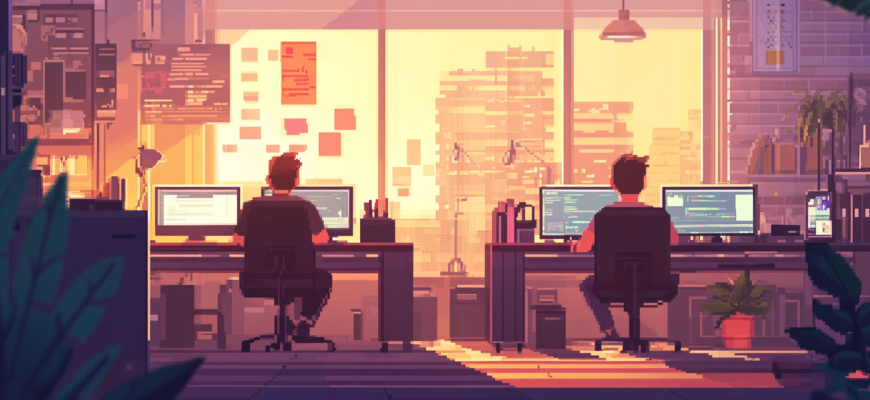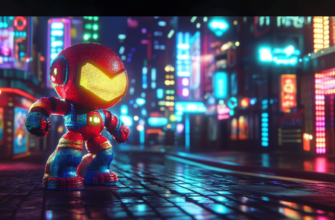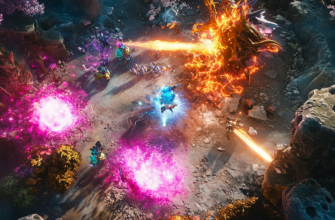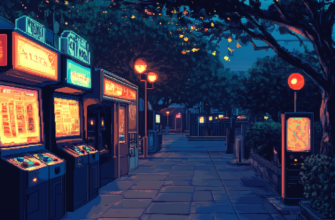- Exploring the originality of indie games vs AAA projects: Why smaller devs often deliver fresher ideas
- What are AAA projects and indie games?
- AAA projects: The mega blockbusters of gaming
- Indie games: The underdog phenomenon
- Why are indie games often more original than AAA games?
- 1. Creative freedom
- 2. Innovation over profit
- 3. Niche desires met
- 4. Personal storytelling
- 5. Lower stakes mean more daring risks
- The indie “risks” that paid off
- Hades
- Slay the Spire
- What AAA studios can learn from indie games
- Practical tips for supporting indie studios
- Conclusion: The magic lies in the personal touch
Exploring the originality of indie games vs AAA projects: Why smaller devs often deliver fresher ideas
We’ve all been there—waiting breathlessly for a brand-new AAA game to drop, only to feel slightly disappointed when it hits. Great graphics? Yeah, sure. But originality? That’s often where AAA titles fall short. Meanwhile, indie games, created by much smaller teams or even solo developers, quite often manage to surprise and delight us with fresh and innovative experiences.
So, why is it that indie games frequently feel more original, more daring, and more refreshing than the big-budget experiences pumped out by AAA studios? I’ll break it down from my personal experiences, the frustrations I’ve felt with some AAA games, and the sheer joy of discovering hidden gems from indie devs. Grab your controller, ’cause we’re about to dig in!
What are AAA projects and indie games?
AAA projects: The mega blockbusters of gaming
A AAA project, for those who might be newer to the gaming world, refers to a title developed by large studios with massive budgets. Think of juggernauts like Rockstar, Activision-Blizzard, or Ubisoft, pumping out games like Grand Theft Auto, Call of Duty, or the Assassin’s Creed series. These games often feature top-notch graphics, big-name voice actors, and colossal marketing campaigns.
Indie games: The underdog phenomenon
Indie games, on the other hand, are produced by smaller teams or individual creators with far fewer financial resources. Sometimes these teams scrape together their savings, launch Kickstarter campaigns, or rely on community investment programs. But what they might lack in budget, they often make up for in originality and creativity. Titles like Hades, Celeste, and Hollow Knight prove that you don’t need a billion-dollar budget to create an unforgettable gaming experience.
Why are indie games often more original than AAA games?
Now that we know the difference in scope, let’s look at five reasons indie games typically offer more originality than their AAA counterparts:
1. Creative freedom
The first major reason indie games can be more creative is that the developers aren’t beholden to publishers or shareholders. AAA studios must answer to shareholders who demand substantial profits, which means they often avoid risky ventures. They tend to stick to tried-and-true formulas—borrowing gameplay mechanics from previous successful titles or building on established franchises.
Indie developers don’t have to play it safe. Since many work independently or are part of small teams, they have the freedom to experiment, often resulting in wild and unconventional mechanics. For example, games like *Undertale* or *Papers, Please* challenge conventional game narratives and mechanics in ways major studios might never dare.
2. Innovation over profit
Because indie devs are typically working on passion projects, their primary goal isn’t necessarily to drive massive profits. They’ve got the freedom to focus on creating something new and exciting rather than worrying about quarterly earnings calls and market demand. Have you ever noticed how many AAA games are annual franchises? No offense to *FIFA* or *Call of Duty*, but sometimes you can see the “copy-paste” formula from a mile away.
3. Niche desires met
Indie developers often take a direct look at what smaller, niche communities want. They fill gaps left by the major studios. Whether it’s a specific gameplay mechanic or an aesthetic choice that deliberately goes against the grain, indie games often scratch an itch that AAA titles can’t or won’t.
*Stardew Valley* is a perfect example here—it delivered something cozy and heartfelt to fans of living-the-farming-life simulators, while massive competitors had overlooked or dropped the genre entirely. It’s a reminder that sometimes the smallest projects speak to the deepest player needs.
4. Personal storytelling
With limited resources, indie developers usually choose to focus on what’s most important to their game. Because of this, many indie games revolve around deeply personal or unique storytelling that can resonate on an emotional level. AAA games sometimes get caught up in big action set pieces or photorealistic graphics, which can leave personal storytelling on the back burner.
- *Celeste*, an outstanding indie game, isn’t just about climbing a mountain. It weaves in themes of mental health, self-discovery, and resilience with light and touching accuracy.
- *Night in the Woods* shifts the focus to a beautiful narrative about friendship, small-town life, and personal struggles.
These games prove that sometimes a handcrafted, intimate story can be far more engaging and poignant than the bloated epics AAA studios are designing.
5. Lower stakes mean more daring risks
AAA publishers pour millions of dollars into a single project, which makes them wary of anything too daring. But in the indie scene? The stakes, and thus the pressure, are lower, which provides a fertile ground for creativity and innovation. With fewer investors to appease, indie devs are free to launch games with radically new ideas.
A great example is *Superhot*, the indie FPS that totally redefined real-time combat mechanics by allowing time to only move when you move. Imagine trying to pitch that idea to EA or Activision! The way indie devs are free to explore unconventional gameplay mechanics sets them apart from the often stagnant AAA space.
The indie “risks” that paid off
Let’s look at some specific indie games that took bold risks and flourished because of it. These games not only went against industry norms—they succeeded in ways that would make any AAA developer take notes!
Hades
*Hades* threw together a roguelike structure mixed with narrative depth, all wrapped in an ancient Greek mythology story. While the roguelike genre doesn’t generally woo mainstream gamers, *Hades* took a massive risk by blending these two seemingly incompatible styles in a beautifully coherent game. Its impact was so stellar that it won multiple game awards and continues to have a dedicated player base.
Slay the Spire
*Slay the Spire* brought the deck-building genre to a wider audience with its brilliant fusion of card mechanics and roguelike gameplay. Could you imagine EA pitching for a deck-builder game instead of the next *Battlefield*? Unlikely. Yet this indie gem revolutionized genre mashups and created a blueprint for future indie devs to follow.
What AAA studios can learn from indie games
While we’re showing a lot of love to indie games in this post, don’t get me wrong—AAA games have their place too. However, there are some things the *big dogs* could learn from the indie world:
- Take risks with storytelling: Games are an art form, and indie devs often prove that a compelling, emotionally resonant narrative is more important than a franchise name.
- Be innovative in gameplay: Indie games show that there’s more than one way to achieve success. By breaking gameplay conventions, you might just redefine a genre.
- Focus on player experience over profits: This is a tough pill to swallow, but the most beloved gaming experiences are often those crafted with passion, not dollar signs in mind.
Practical tips for supporting indie studios
If you’re looking to support indie developers and keep the originality flowing in the gaming world, here are some practical things you can do:
- Buy their games: This seems simple, but it’s the most direct way to support indie devs. Instead of waiting for sales or huge discounts, buy when their game first drops!
- Spread the word: Not every indie game has a huge marketing budget. Share gameplay clips online, write reviews, or suggest your friends try them out.
- Engage with their communities: Join forums and social media circles dedicated to the indie game. Often, developers take feedback from the community and use it to improve their ongoing or future projects.
Conclusion: The magic lies in the personal touch
So, why are indie games more original than most AAA titles? It’s because they’re made by passionate devs with the freedom to experiment, build personal stories, and cater to niche desires. There’s less at stake in terms of finances, so they can take big gambles—ones that often pay off in ways the industry couldn’t anticipate.
If you’re tired of the same-old franchise updates, do yourself a favor—go to Steam, GOG, or itch.io and dive into the indie game categories. You’ll be surprised at how much creative gold you’ll find there.
As more gamers rally to support indie developers, that originality and innovation will continue to thrive, hopefully even inspiring some AAA developers to take bigger chances in their work. Let’s keep that indie magic alive by supporting these risk-takers and discovering brilliant new worlds along the way.

















